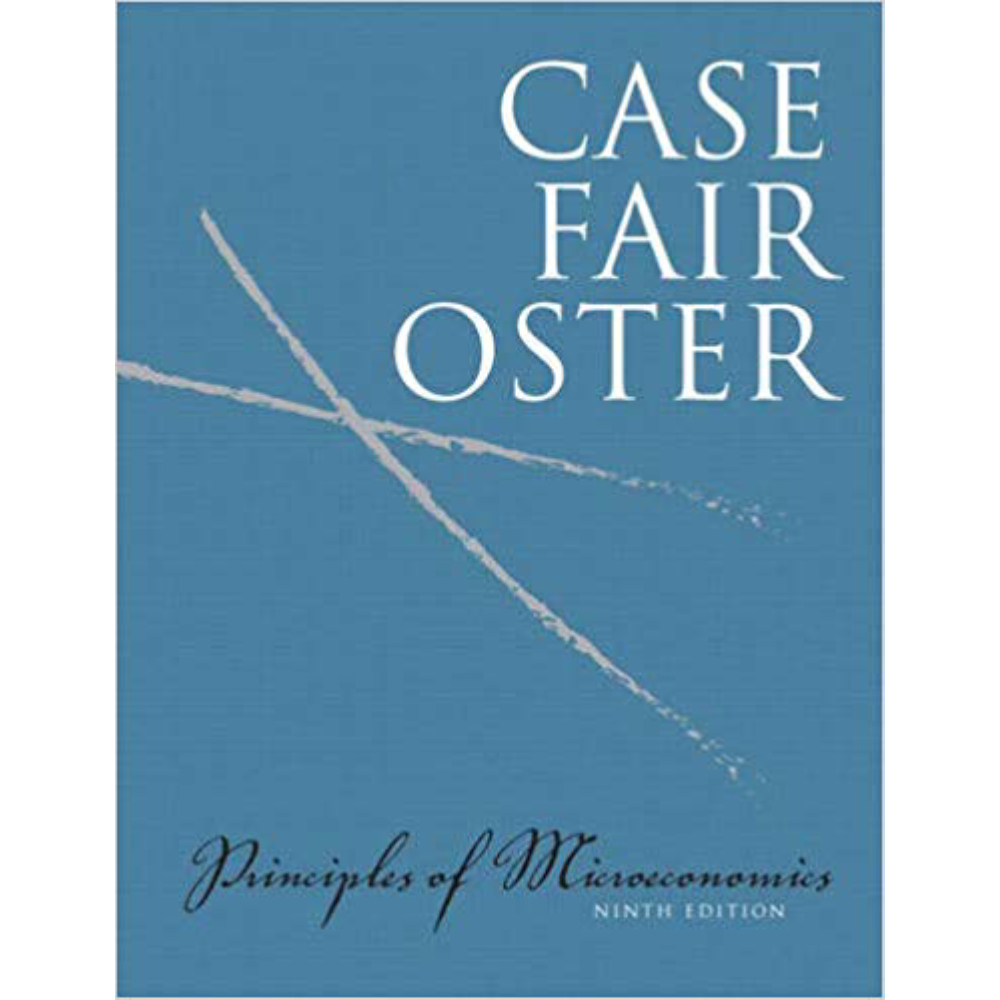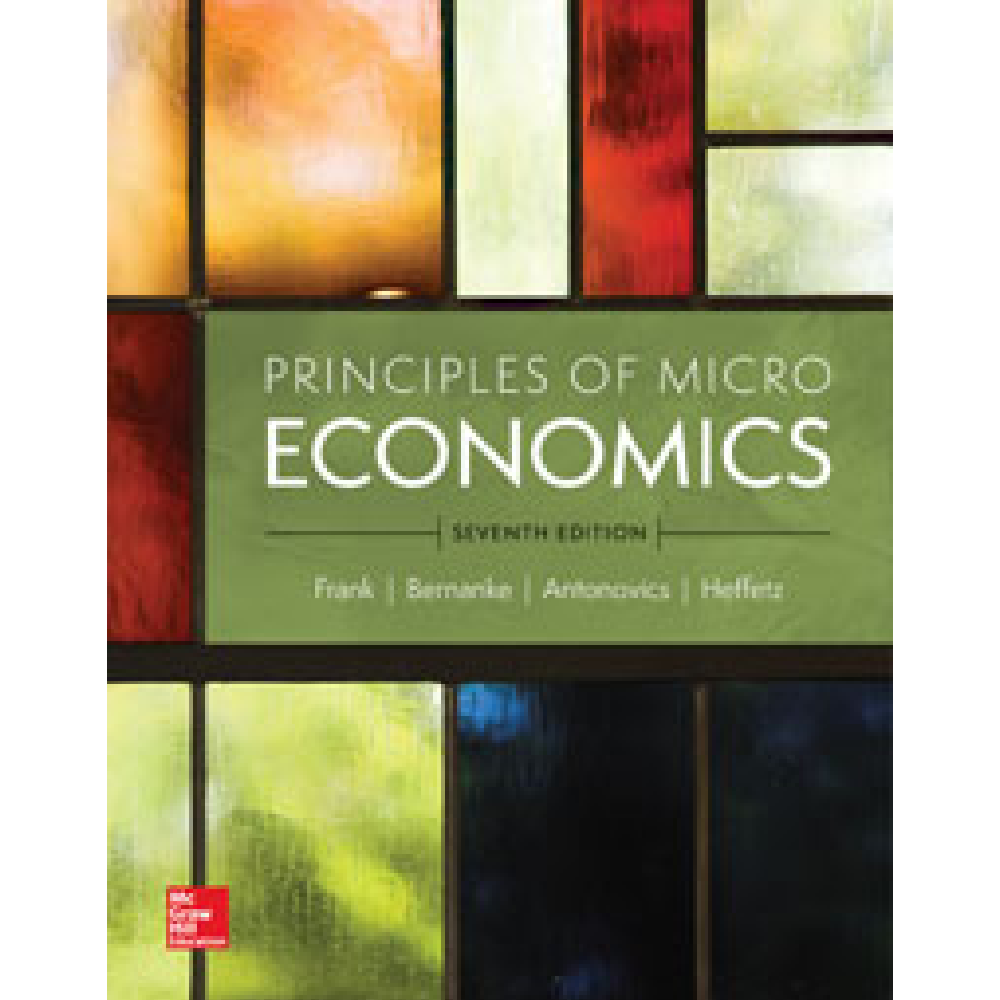Principles Of Microeconomics 7th Edition By Robert Frank – Test Bank
$55.00
Principles Of Microeconomics 7th Edition By Robert Frank – Test Bank
You will receive this product within 24 hours after placing the order
Overview
Chapter 11
Externalities, Property Rights, and the Environment
1) A cost of an activity that falls on people not engaged in the activity is called a(n):
A) external benefit.
B) prisoner’s dilemma.
C) negative externality.
D) positive externality.
Answer: C
Explanation: An external cost, also called a negative externality, is a cost of an activity that falls on people other than those who pursue the activity.
Difficulty: 1 Easy
Topic: External Costs and Benefits
Learning Objective: 11-01 Define negative and positive externalities and analyze their effect on resource allocation.
Bloom’s: Remember
AACSB: Reflective Thinking
Accessibility: Keyboard Navigation
2) Which of the following is an example of an activity with an external cost?
A) Raising honeybees where neighbors on all sides grow apples.
B) Keeping your front yard clean.
C) Speeding on the interstate.
D) Having to buy batteries for the new remote that came with a TV.
Answer: C
Explanation: An external cost, also called a negative externality, is a cost of an activity that falls on people other than those who pursue the activity. One person’s speeding imposes costs on others.
Difficulty: 2 Medium
Topic: External Costs and Benefits
Learning Objective: 11-01 Define negative and positive externalities and analyze their effect on resource allocation.
Bloom’s: Understand
AACSB: Reflective Thinking
Accessibility: Keyboard Navigation
3) A benefit of an activity received by people not participating in the activity is called a(n):
A) winner’s curse.
B) positive externality.
C) external cost.
D) negative externality.
Answer: B
Explanation: An external benefit, also called a positive externality, is a benefit of an activity received by people other than those who pursue the activity.
Difficulty: 1 Easy
Topic: External Costs and Benefits
Learning Objective: 11-01 Define negative and positive externalities and analyze their effect on resource allocation.
Bloom’s: Remember
AACSB: Reflective Thinking
Accessibility: Keyboard Navigation
4) Suppose Frank likes to snack on sugary candy. Frank knows that it’s bad for his teeth to eat sugary candy, but he doesn’t care. Frank’s snacking habits have no impact on anyone other than Frank. In this case, Frank’s consumption of sugary candy generates:
A) a negative externality.
B) a positive externality.
C) neither a positive nor a negative externality.
D) both a positive and a negative externality.
Answer: C
Explanation: Since Frank’s consumption of candy has no impact on anyone other than Frank, it generates neither a positive nor a negative externality. That is, all of the costs and benefits of Frank’s snacking habits, fall on Frank.
Difficulty: 2 Medium
Topic: External Costs and Benefits
Learning Objective: 11-01 Define negative and positive externalities and analyze their effect on resource allocation.
Bloom’s: Understand
AACSB: Reflective Thinking
Accessibility: Keyboard Navigation
5) Carmen listens to opera music every evening when she gets home from work. Carmen loves listening to opera, but her neighbor Paul, who can also hear the music, hates it. If Paul is the only person besides Carmen who can hear the music, then Carmen’s music generates:
A) a negative externality.
B) a positive externality.
C) neither a positive nor a negative externality.
D) both a positive and a negative externality.
Answer: A
Explanation: Since Carmen’s music imposes a cost on Paul, it generates a negative externality.
Difficulty: 2 Medium
Topic: External Costs and Benefits
Learning Objective: 11-01 Define negative and positive externalities and analyze their effect on resource allocation.
Bloom’s: Understand
AACSB: Reflective Thinking
Accessibility: Keyboard Navigation
6) On Saturdays, Stan goes to the park to play his saxophone. Some of the people in the park love listening to Stan play, while others find his music really annoying. In this case, Stan’s saxophone playing generates:
A) a negative externality.
B) a positive externality.
C) neither a positive nor a negative externality.
D) both positive and negative externalities.
Answer: D
Explanation: Since Stan’s music imposes a cost on some, but generates a benefit to others, it generates both positive and negative externalities.
Difficulty: 2 Medium
Topic: External Costs and Benefits
Learning Objective: 11-01 Define negative and positive externalities and analyze their effect on resource allocation.
Bloom’s: Understand
AACSB: Reflective Thinking
Accessibility: Keyboard Navigation
7) Given that most people like the smell of baking cinnamon rolls and dislike the smell of burning tires, baking cinnamon rolls generates ________ externality, and burning tires generates ________ externality.
A) a positive; a negative
B) a negative; a positive
C) a positive, no
D) no; a negative
Answer: A
Explanation: Positive externalities yield benefits to others while negative externalities impose costs on others.
Difficulty: 2 Medium
Topic: External Costs and Benefits
Learning Objective: 11-01 Define negative and positive externalities and analyze their effect on resource allocation.
Bloom’s: Understand
AACSB: Reflective Thinking
Accessibility: Keyboard Navigation
8) Which of the following is NOT an example of an activity with external benefits?
A) Eating a sandwich in the dining hall
B) Planting flowers in your front yard
C) Installing smoke alarms in your house
D) Having your car’s faulty exhaust system repaired
Answer: A
Explanation: An external benefit is a benefit that falls on people other than those who pursue the activity. Eating a sandwich does not yield benefits for anyone other than the consumer.
Difficulty: 2 Medium
Topic: External Costs and Benefits
Learning Objective: 11-01 Define negative and positive externalities and analyze their effect on resource allocation.
Bloom’s: Understand
AACSB: Reflective Thinking
Accessibility: Keyboard Navigation
9) The existence of a negative externality will result in:
A) a less than optimal level of production.
B) a greater than optimal level of production.
C) prices that are artificially high.
D) elimination of deadweight loss.
Answer: B
Explanation: A supplier will not consider external costs, and so will produce more than is socially optimal.
Difficulty: 1 Easy
Topic: External Costs and Benefits
Learning Objective: 11-01 Define negative and positive externalities and analyze their effect on resource allocation.
Bloom’s: Remember
AACSB: Reflective Thinking
Accessibility: Keyboard Navigation
10) If the market equilibrium quantity is greater than the socially optimal quantity, one can infer that:
A) the private supply curve for the activity is to the left of the socially optimal supply curve.
B) the private demand curve for the activity is below the socially optimal demand.
C) there is a positive externality associated with this good.
D) there is a negative externality associated with this good.
Answer: D
Explanation: Buyers and sellers do not consider external costs, so the market will produce more than the socially optimal quantity.
Difficulty: 2 Medium
Topic: External Costs and Benefits
Learning Objective: 11-01 Define negative and positive externalities and analyze their effect on resource allocation.
Bloom’s: Understand
AACSB: Reflective Thinking
Accessibility: Keyboard Navigation












Reviews
There are no reviews yet.